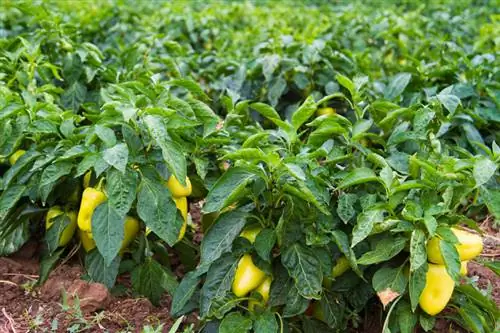- Author admin [email protected].
- Public 2023-12-16 16:46.
- Last modified 2025-01-23 11:22.
Bread tastes best when homemade. But you go one step further by not only making the dough yourself, but even growing the grains required for it yourself. Find out in this article that it's not that difficult. Here you will find valuable tips and useful information about the different varieties.

How to grow crops in your own garden?
To plant your own grain, you should choose either winter or spring wheat, dig the soil, sow seeds and keep them moist at all times. Keeping snails and pests away and regularly removing weeds are just as important.
Planting instructions
Time
Domestic grain varieties are divided into two groups. Depending on which species you choose, you should adhere to the recommended time for sowing:
- Winter wheat: sow in autumn, harvest in May
- Spring wheat: sow in spring, harvest in autumn
Winter wheat produces much higher yields because the grain has longer time to mature.
Procedure
- Calculate the required area depending on the desired quantity.
- Choose one of the wheat varieties mentioned above.
- Alternatively, you can of course also grow millet, corn, rye, barley or oats.
- Choose a sunny location.
- Dig the soil 15 cm deep.
- A rotary tiller is best suited for this purpose (€668.00 on Amazon).
- Level the surface.
- Work compost into the soil (only if the soil is very dry).
- Sow one seed per 2.5 square meters.
- Work the seeds into the soil with a rake.
- Place a 4 cm layer of soil on top of the seeds.
- Water the seeds immediately after sowing.
- Continue to keep the soil moist (depending on the amount of rainfall).
- Remove emerging weeds regularly.
- Keep snails and pests away.
Furthermore, your homeland decides which variety is best suited for domestic cultivation. In some regions durum wheat thrives better, in other regions soft wheat has better growth prospects. By the way, the type of grain also depends on the intended use:
- Soft wheat for sweet pastries (low gluten content)
- Durum wheat for bread or pasta (high gluten content)






